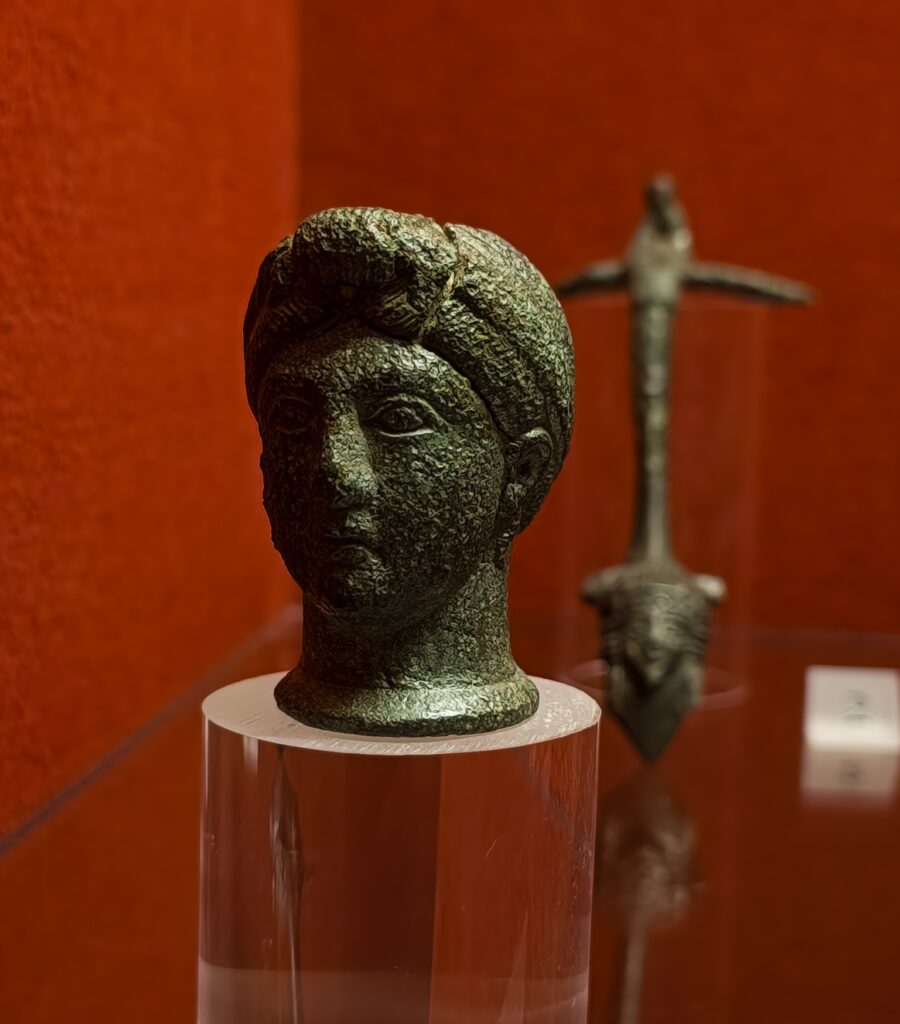If you happen to stroll among the olive trees surrounding Agriturismo Casa Olivo, you might not imagine you're standing next to one of the most fascinating and lesser-known archaeological sites in the Maremma: the Pieve Vecchia, a place where history has left its mark dating back two thousand years. This site tells an important story of the long history of the Campagnatico area, a small municipality yet extraordinarily rich in archaeological evidence dating from prehistory to the Middle Ages.
Pieve Vecchia is home to one of the most important Roman sites in the area, identified as an imperial-era rustic villa, later reused in the medieval period. Excavations, which began in the 1980s, have uncovered monumental structures that are still visible, testifying to a solid and enduring Roman presence. But the true heart of this story lies a short distance away, in the Poggio Rotigli area, where a surprising object was discovered: the military diploma of Praetorian Guard Valerius Clemens.
This discovery, now preserved at the Museo Archeologico e d’Arte della Maremma in Grosseto (MAAM), is considered one of the most important epigraphic finds in the Maremma area of Grosseto. It is an engraved bronze plate granting Roman citizenship and the right to marry to Valerius Clemens, a soldier of the Praetorian Guard, at the end of his service. An official document, full of historical significance, it gives us the personal voice of a man who lived in the 1st century AD. The diploma is composed of two rectangular tablets, one larger and thicker than the other, joined by two central holes. Originally connected by a cord through the holes, they were sealed with lead or tin to ensure the privacy of the internal inscriptions and prevent fraud.
But the most intriguing curiosity may be the landscape and archaeological connection between the site of Poggio Rotigli—where the diploma was discovered during agricultural work in 1958—and that of Pieve Vecchia. Both could, in fact, be part of a single settlement system, perhaps linked to a secondary road that ran up the Ombrone valley and connected the hinterland with the Tyrrhenian coast. Some scholars have hypothesized that Poggio Rotigli was a mansio, that is, a Roman post station, with a bathhouse and necropolis, serving travelers. The hypothesis is fascinating, especially considering the proximity to the villa of Pieve Vecchia, which may have been a residential or production hub of this system.
The Roman villa on the Pieve Vecchia site overlooked fertile agricultural land, still cultivated today according to ancient traditions. Its structures, reused in the Middle Ages to build the parish church, speak to a continuity of use that unites worlds far removed in time. It is precisely this stratification—Roman, Medieval, and rural—that makes the landscape of Casa Olivo a special place, where history is not only told in books, but can be "walked."
Alongside these two sites, other archaeological remains stand out in the municipality of Campagnatico, such as the Etruscan necropolis of Marrucheti and the early Iron Age tombs at Podere Manzinello. In more remote times, during the Pliocene, the area was submerged by a tropical sea: evidence of this is the fossils of sirenians found in the Arcille area, true "ancestors" of the dugong. This ancient biodiversity tells us about another type of past, a geological one.
This entire heritage was the subject of an initial exhibition "Natione Italus: the Campagnatico territory from its origins to the Middle Ages" in 2013, held in the church of Sant'Antonio Abate in Campagnatico and promoted by a network of institutions including the Ministry of Culture, various Tuscan universities, and the MAAM in Grosseto. More recently, at the end of 2023, Valerius Clemens' diploma was chosen as the symbol of the exhibition "Honesta Missio: the diploma of Valerius Clemens" at the Maremma Archaeological and Art Museum, as a tribute to the territory's identity. The diploma is now on display in the museum's permanent collection, along with other artifacts from the same context, invaluable for the knowledge and history of the local area and enriching the region's historical and cultural heritage.
So, what does a military diploma found in the fields have to tell? Much more than you might think: it is the starting point for rediscovering the richness of a seemingly quiet territory, where among olive trees and ancient stones, under every clod of earth a fragment of civilization may be hidden, a still little-known part of this long history.
For those staying at Casa Olivo, we recommend a visit to the Maremma Archaeological and Art Museum (MAAM) in Grosseto, where you can admire Valerius Clemens' diploma and many other artifacts from Campagnatico and the Pieve Vecchia area.
Source: M.G. Celuzza, M.A. Turchetti (eds), NATIONE ITALUS. Valerio Clemente and the territory of Campagnatico from its origins to the Middle Ages, Exhibition catalog, Grosseto 2012
